WATCH: Introducing Our Common Ground Scorecard
/by Justin SinesWant more progress and less division in politics? Our new Common Ground Scorecard can help inform your vote.
We all need our government to work effectively – but it won’t unless we elect those with the capacity to reach across the aisle. That’s why we created the Common Ground Scorecard, a free mobile-friendly tool that helps voters of all parties evaluate how well your elected officials are doing at listening, leading productive conversations and finding bipartisan points of agreement.
VIDEO: View our short tutorial on how to use the Common Ground Scorecard.
Give the scorecard a try, and see how it can help inform your vote for candidates who will work for more progress, and less division.
2020 Election Briefing: Can We Hold A Fair Election?
/by Justin Sines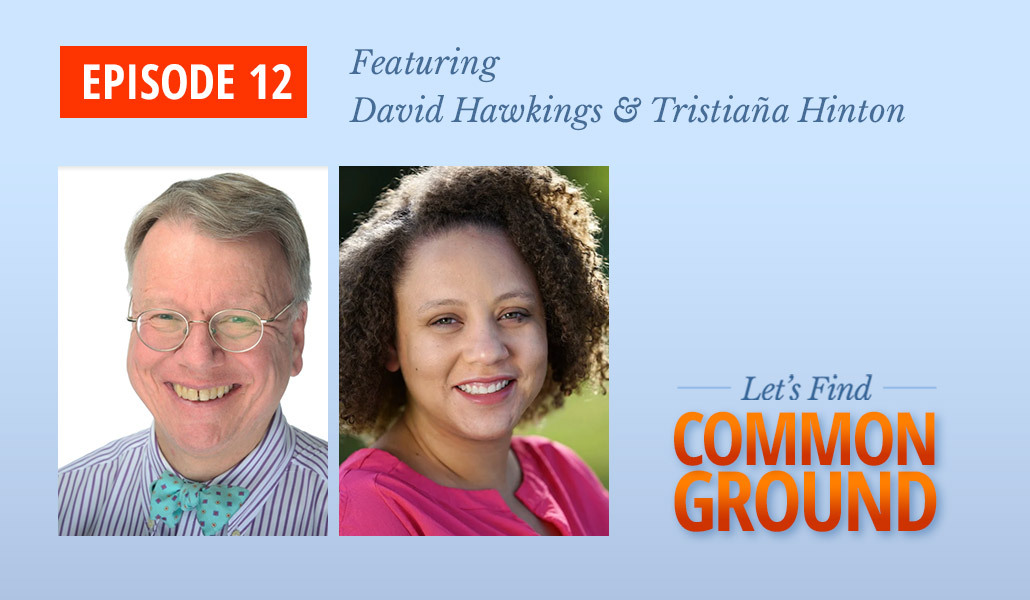
Subscribe to the Podcast
States are scrambling to manage voting in a pandemic. Is it possible to hold a free and fair election?
With only weeks to go before the 2020 election, many challenges remain to holding a free and fair voting process in the middle of the COVID-19 pandemic. From an expected surge in mail-in and absentee ballots, to accessible polling places for millions of voters, to the urgent need for accuracy, we discuss some of the most important and complex questions on the next episode of our podcast, “Let’s Find Common Ground.”
David Hawkings, editor in chief and Tristiaña Hinton, audience development editor, of The Fulcrum explain America’s many different statewide systems of voting, and why it could take days or weeks for winners to be declared. We look at the disputes between Republicans and Democrats, including the possibility of a disputed result, and explore why many local election officials from both parties share common ground on the need for fair and accurate results.
The Fulcrum is a non-profit, non-partisan digital news organization focused exclusively on efforts to reverse the dysfunctions plaguing American democracy. The Fulcrum and Common Ground Committee are members of Bridge Alliance, which acts as a connectivity hub for over 90 civic action organizations.
Read the Episode Transcript
Ep. 12 – 2020 Election Briefing: Can We Hold A Fair Election?
Tristiaña Hinton
Tristiaña Hinton is an audience development editor at The Fulcrum, a nonprofit, nonpartisan digital news outlet that covers democracy reform. She is also an associate producer on MLB Network Radio at SiriusXM. She started her career at WTOP Radio in Washington, DC. In her free time, she likes hanging out with her pets and pretending to play the guitar.
David Hawkings
David Hawkings is the founding editor in chief of The Fulcrum, a nonprofit and nonpartisan digital news organization focused exclusively on efforts to reverse the dysfunctions plaguing American democracy. Before starting The Fulcrum in 2018 he was the senior editor of CQ Roll Call, writing columns for each publication and hosting the “Roll Call Decoder” series of videos and podcasts. He spent six years as managing editor of CQ Weekly, when the magazine won two Dirksen Awards for coverage of Congress, and before that supervised all legislative coverage and was managing editor for daily news.
2020 Election Briefing: Climate Change
/by Justin Sines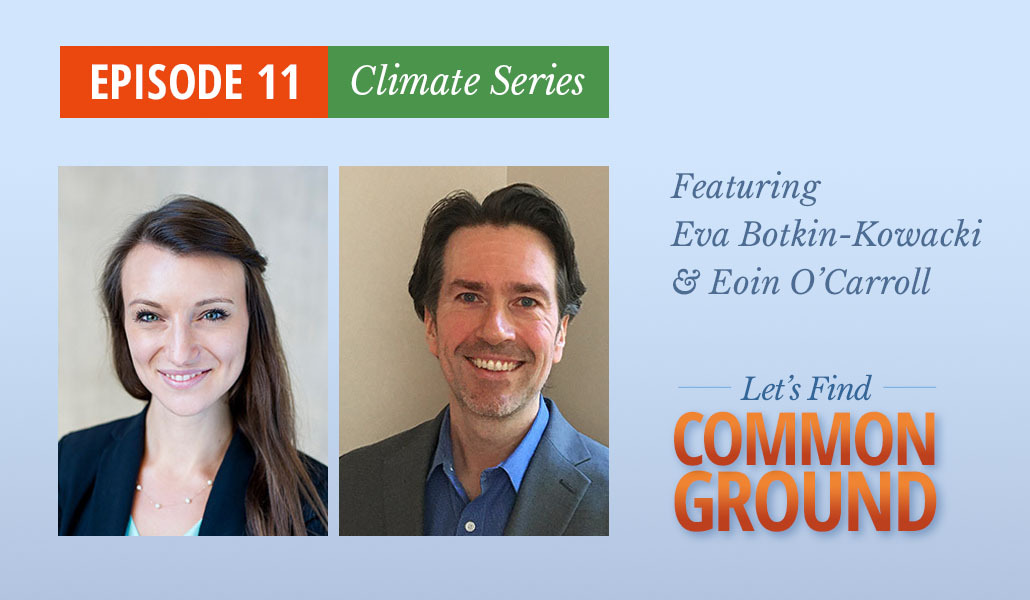
Subscribe to the Podcast
Climate change is increasingly important to voters. But can we find a common path forward?
Climate change is a much more important issue for many voters in the November election than it was in 2016. According to a recent poll by Pew Research Center, a record-high 60% of Americans say it is a major threat to the well-being of the United States.
To gain a deeper understanding, we focus on controversial questions about climate, from the role played by government and the private sector to questions about fracking, renewable energy and nuclear power.
Our guests are journalists Eoin O’Carroll & Eva Botkin-Kowacki of The Christian Science Monitor. Eva and Eoin are staff reporters on the newspaper’s science, technology and environment team.
Read the Episode Transcript
Ep. 11 – 2020 Election Briefing: Climate Change
Eva Botkin-Kowacki
Eva Botkin-Kowacki is a staff reporter on The Christian Science Monitor’s science, environment, and technology team. Previously, she was the Robert Cowen Science Journalism Fellow at the Monitor. She first joined the Monitor as an intern in June 2014.
Eva has also reported for The Reading Eagle in Reading, Penn., The Tennessean in Nashville, Tenn. and The Recorder in Greenfield, Mass. She holds a bachelor’s degree in English from Vanderbilt University.
At the Monitor, Eva covers everything under the sun and beyond. She is particularly interested in space, anthropology, human impacts on the Earth, and the relationship between non-scientists and science.
During her stint at The Reading Eagle, Eva was part of a reporting team that dug into the story behind the trash piling up in the county. The resulting piece, “Landfill capital of Pennsylvania,” won first place in the Special Project category at the Pennsylvania Keystone Press Awards.
Twitter: @EBotkinKowacki
Facebook: @eva.botkinkowacki
Eoin O’Carroll
Eoin O’Carroll is a staff writer for The Christian Science Monitor’s science, technology, and environment desk. He began working at the Monitor in 2005 as an HTML producer. Since then, he has worked as an environment blogger, web producer, SEO coach, and science editor.
Before joining the science desk as a writer, Eoin was an editor for the Monitor’s Rapid Response Team, where he trained early-career journalists in writing and web production.
Eoin holds a Master’s degree in journalism from Boston University’s College of Communication and a Bachelor’s degree in philosophy from Wesleyan University.
Twitter: @eoinocarroll
Website: http://www.eoinocarroll.com/
WATCH: Finding Common Ground & New Hope Through Music
/by Justin SinesIn this hyper-partisan age, where can we find the inspiration to move past our division? Former Christian Science Monitor politics editor Gail Russell Chaddock recently sat down for a virtual conversation with Common Ground Committee co-founder Bruce Bond and musicians Adam Gussow and Rod Patterson. They explore the power of music to uplift us, invite us to think differently and renew our hope for a shared future.
Watch the highlights now for a thought-provoking conversation on America’s path forward and the story behind the making of Come Together, a new music video jointly produced by Common Ground Committee and Sir Rod & The Blues Doctors that issues a rousing call to open our ears and our hearts – whether we wear red, or we wear blue.
Dreading Election Season? Get 5 Tips for Better Political Conversations
/by Justin SinesOur series of monthly actions invite Common Grounders to bring light, not heat, to the work of leading progress on America’s most pressing issues. This month: as tensions rise during election season, prepare yourself with tools for leading better political conversations.

August 2020 Action: Find More Common Ground in Your Political Conversations
With the countdown to the general election now underway, political divisions can be more fraught than ever – particularly at home, where the emotional stakes are high. This month, prepare yourself to lead better conversations with family and friends who may hold opposing political views.
5 tips for better political talks
Turns out, (nearly) everything we need to know about successful political conversations we learned in Kindergarten: take turns, be curious, and be respectful.
Looking to go a bit further? These five simple tips from Common Ground Committee co-founder Bruce Bond, Living Room Conversations co-founder Joan Blades and Bridges USA co-founder Manu Meel will set you up for more successful conversations with loved ones on some of today’s most divisive issues.
- Examine your motives. Before engaging in conversation on a politically charged topic, be honest with yourself about what you hope to achieve. Is your goal to change the other person’s mind, or to understand them better so you can begin to bridge divides? (The latter, as you might guess, has a much greater chance of success.)
- Don’t go in cold. The first step in any successful conversation is relating to the other person as a human being. Before delving into a politically sensitive topic, look for a way to break the ice and reinforce your personal connection.
- Listen to understand, and show it. When it comes to political conversations, are you simply listening for points you can successfully argue? Or to truly understand the other person’s motivations and perspective? To have a productive discussion, you must first understand the personal reasons someone holds a certain view; then show you’ve really heard their contribution to the conversation. That can open the door to an “a-ha moment.”
- Look for shared values. Conflict resolution experts who utilize interest-based bargaining offer a good lesson on navigating high-stakes issues. Rather than delving into where each of you stand on specific policy positions – for instance, immigration reform – go deeper. Try to identify shared values, such as your support of an inclusive society or the pursuit of the American dream. From there, it can be easier to find areas of common ground.
- Know when to redirect. The ability to use and accept facts is a prerequisite for productive conversation. So, if your trusted experts are different and there are no shared facts, it may not be possible to have healthy discussion with someone on a divisive political issue. Accept that we all must live with and love people with different viewpoints, and that de-escalating a heated situation may be the most constructive action you can take.
In a polarized political atmosphere and heated election season, we can each play a role in bringing light, not heat, to the nation’s civil discourse. Get more insight on how you can heal the divide (and talk politics) by watching our full webinar with Living Room Conversations and Bridge USA, and by downloading our Common Grounder guide.
Two Friends – One Democrat & the Other Republican – Search for Common Ground
/by Justin Sines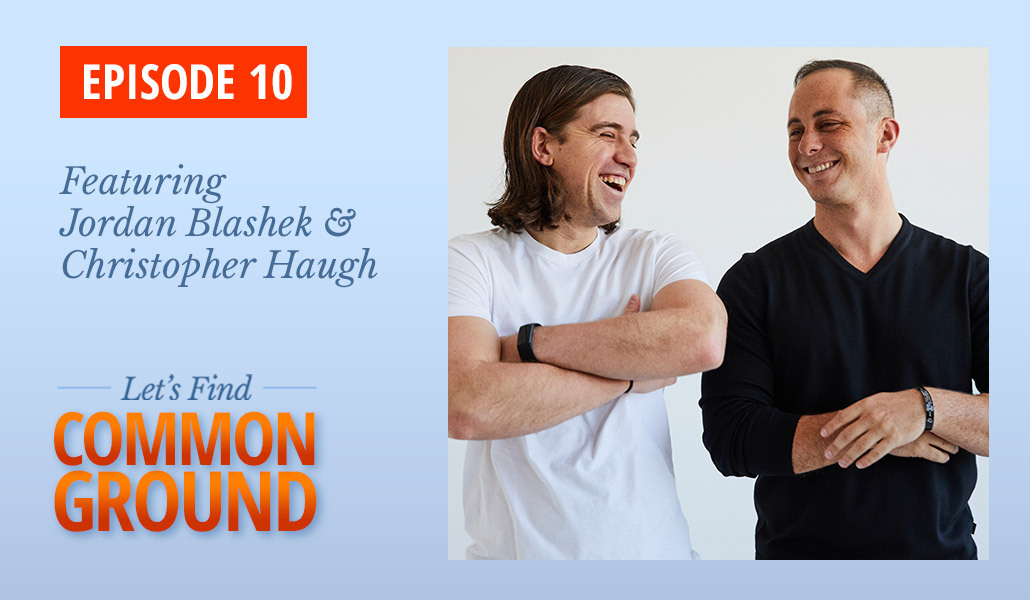
Subscribe to the Podcast
In partisan times, what can a liberal writer and conservative veteran teach us about coming together?
How far apart are we really? A liberal writer from Berkeley and a conservative military vet decided to explore that question together during a series of long road trips in an old Volvo. They drove through 44 states and on nearly twenty thousand miles of road and highways, meeting an extraordinary range of people along the way.
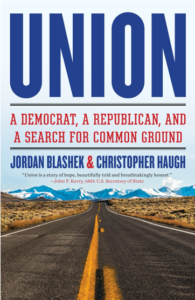 At a time of political gridlock and hyper-partisanship, Republican Jordan Blashek and Democrat Chris Haugh formed an unlikely friendship that blossomed, not in spite of, but because of their political differences.
At a time of political gridlock and hyper-partisanship, Republican Jordan Blashek and Democrat Chris Haugh formed an unlikely friendship that blossomed, not in spite of, but because of their political differences.
The result of their road trips is the new book Union: A Democrat, A Republican, and a Search for Common Ground. In this podcast episode, we discover what they learned about American politics, culture, civics, and our potential to find common ground.
Read the Episode Transcript
Ep. 10 – Two Friends – One Democrat & the Other Republican – Search for Common Ground
Jordan Blashek
Jordan Blashek is a businessman, military veteran, and attorney from Los Angeles, California. After college, Jordan spent five years in the US Marine Corps as an infantry officer, serving two combat tours overseas. He holds degrees from Yale Law School, Stanford Graduate School of Business, and Princeton University. Jordan is based in New York, where he invests in entrepreneurial efforts to grow the American middle class as a part of Schmidt Futures, a philanthropic initiative founded by Eric and Wendy Schmidt.
Christopher Haugh
Christopher Haugh is a writer from Kensington, California. After graduating with highest honors from the University of California, Berkeley, Chris attended Oxford University and started speechwriting as an intern in the Obama White House. He went on to join the U.S. Department of State’s Policy Planning Staff where he served as a speechwriter to the Secretary. In 2018, Chris graduated from Yale Law School where he was a Yale Journalism Scholar. Chris is based in the San Francisco Bay Area and New York.
WATCH: Behind the Scenes of the New Music Video “Come Together”
/by Justin SinesCan we find the inspiration to move past our country’s division? In this virtual discussion, former Christian Science Monitor politics editor Gail Russell Chaddock talks with Common Ground Committee co-founder Bruce Bond and musicians Adam Gussow and Rod Patterson about how a musical collaboration is inviting listeners to think differently and find hope for the future.
Learn more about the making of “Come Together,” a music video produced by Common Ground Committee and Sir Rod & The Blues Doctors that issues a rousing call to open our ears and our hearts – whether we wear red, or we wear blue.
Watch now to find out what inspired the music, enjoy a not-to-be-missed impromptu jam session, and see how we can each play a role in healing conflict, upholding the ideal of respect, discovering shared purpose and finding common ground.
My Body is a Confederate Monument
/by Justin Sines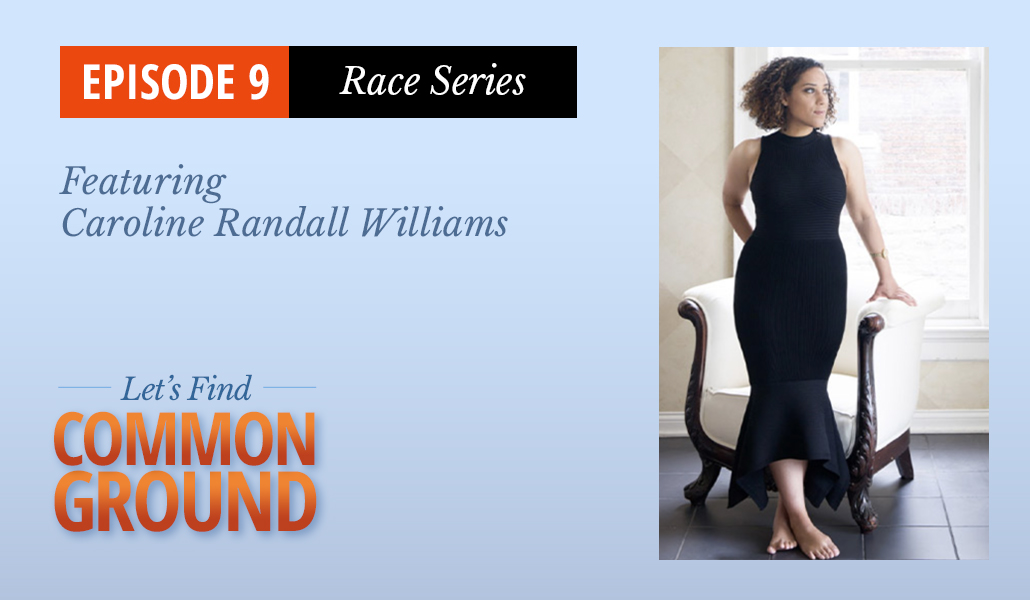
Subscribe to the Podcast
The call to remove Confederate monuments is growing. What is our responsibility in examining history?
“I am proud of every one of my black ancestors who survived slavery. They earned that pride, by any decent person’s reckoning. But I am not proud of the white ancestors whom I know, by virtue of my very existence, to be bad actors.”
So wrote poet Caroline Randall Williams in a widely-read opinion column for the New York Times. As a Black southern woman with white ancestors, her view of the debate over how America remembers its past is deeply personal.
This episode is the latest in our podcast series on race where we work to bring light, not heat to the issue. Recent protests across the country have sparked renewed controversy over confederate statues and the naming of military bases and public buildings that celebrate men who fought in the Civil War against the government of the United States.
Should the monuments be repurposed or removed? We discuss ways to find common ground and expand our understanding of American history.
Caroline Randall Williams is a writer in residence at Vanderbilt University. She is a resident and native of Tennessee. Some of her ancestors were enslaved. She is the great-great grand-daughter of Edmund Pettus, for whom is named the bridge in Selma, Alabama where the March, 1965 civil rights march known as “Bloody Sunday” took place. Pettus was an officer in the Confederate army, a grand dragon of the Ku Klux Klan and U.S. Senator from Alabama.
Read the Episode Transcript
Ep. 9 – My Body Is a Confederate Monument
Caroline Randall Williams
Born and raised in Nashville Tennessee, Harvard graduate Caroline Randall Williams is an award-winning poet, young adult novelist, and cookbook author as well as an activist, public intellectual, performance artist, and scholar. She joined the faculty of Vanderbilt University in the Fall of 2019 as a Writer-in-Residence in Medicine, Health, and Society while she continues to work and speak to the places where art, business, and scholarship intersect, moving people closer to their best lives and corporations closer to their ideal identities.
She has spoken in twenty states: Alabama, Arkansas, California, Florida, Georgia, Louisiana, Maryland, Massachusetts, Michigan, Minnesota, Mississippi, Nevada, New Hampshire, New York, Oregon, Pennsylvania, Tennessee, Texas, Washington and West Virginia, in venues that range from as small as a classroom in a neighborhood school to as large as the Superdome mainstage during Essence Fest. To every speaking engagement Caroline brings a fierce intelligence, disarming charm, a touch of glamour, and a depth of lived experience that belies her thirty-two years. She has taught in two of the poorest states in the union — Mississippi and West Virginia — and she has been educated at two of the richest universities on the globe — Harvard and Oxford.
Named by Southern Living as “One of the 50 People Changing the South,” the Cave Canem fellow has been published and featured in multiple journals, essay collections and news outlets, including The Iowa Review, The Massachusetts Review, CherryBombe, Garden and Gun, Essence and the New York Times.
Come Together: A Musical Journey Bridges Divides
/by Justin SinesIn 1986, a Black blues artist and a white Ivy League graduate made history. Today, their music lives on through a new generation – and has sparked a new call for hope & unity.
This spring, in the midst of the unfolding coronavirus crisis and national protests over police brutality and racial inequity, Common Ground Committee co-founder Bruce Bond opened his inbox to a message from his old college roommate, Adam Gussow.
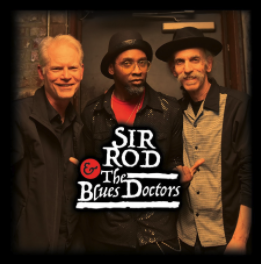 Gussow, a well-known musician on the blues scene, had just gotten out of the studio after recording a new album by Sir Rod & The Blues Doctors. Its title song, “Come Together,” spoke to the mission of healing polarization in America. His offer: would Common Ground Committee like to use the music as an inspirational message to followers?
Gussow, a well-known musician on the blues scene, had just gotten out of the studio after recording a new album by Sir Rod & The Blues Doctors. Its title song, “Come Together,” spoke to the mission of healing polarization in America. His offer: would Common Ground Committee like to use the music as an inspirational message to followers?
The answer, of course, would turn out to be yes. As a musician himself, Bond recognized the power of music to touch people’s souls. And as a friend watching Gussow’s life-changing odyssey through the blues, he had seen firsthand that it can be a truly transformational force.
Satan & Adam: an unlikely pair becomes a force in the blues world
When Bond and Gussow first met as students at Princeton University in the late 1970s, Bond couldn’t have predicted that Gussow would become an internationally recognized blues harmonica player.
“I had him pegged as a professor,” says Bond, recalling that Gussow was into literature. “He was always a very good thinker, and a very good writer.”
Bond and Gussow did, however, share an interest in playing the guitar. Eventually, they joined a pair of other students to rent an off-campus apartment; a maverick move, in those days. Although he had played blues harmonica back in high school, Gussow had gained a reputation as a funk guitar player for Spiral, a band Bond calls “the best jazz band on campus.”
It was later, in 1986, that a chance meeting changed the trajectory of Gussow’s life. By then, having dropped out of grad school at Columbia, Gussow was tutoring at Hostos Community College in the South Bronx. He had also started playing the harmonica again in the aftermath of a bad breakup. Gussow was wandering the city with his harp in his pocket when, busking on a Harlem sidewalk, he saw an older musician at work whose voice was reminiscent of the raw power of Muddy Waters, and his mastery of the guitar effortless.
In a city then brewing with racial tension, on a block just down from the Apollo Theatre, there were no white faces to be seen. But Gussow had to stop and listen to “Mr. Satan.” After a bit, he pulled his harmonica out of his pocket and asked if he could play along.
After Gussow’s promise that he wouldn’t embarrass him, Satan agreed. Soon, they found a natural groove together. Gussow asked if he could come back again the next day – and kept coming back.
![Satan and Adam [Corey Pearson]](https://commongroundcommittee.org/wp-content/uploads/2020/07/Satan-and-AdamCorey-Pearson.jpg)
Satan and Adam: Adam Gussow with Sterling Magee on the streets of Harlem in the 1980s
It took some time to discover who Mr. Satan really was: a virtuoso of the 1960s music scene, Sterling Magee. Originally from Mississippi, Magee was a natural guitar prodigy who had recorded with Marvin Gaye, Etta James and more, as well as writing songs.
Despite his talent, Magee had failed to reach stardom himself. Suppression by record labels and unfair compensation for Black artists convinced him to leave the industry; and, by the 1980s, he had reinvented himself as a one-man band and street prophet, playing on the Harlem streets for “his people.”
Enthralled by Magee’s hard, deep blues, Gussow committed himself to the duo. For his part, Magee recognized the harmonica and the unlikely pairing of the two musicians on the streets of Harlem made the act a greater success. Inevitably, a white Jewish Ivy League student & black Misississippi blues man playing music in the streets began to attract attention. Documentary makers began filming footage of their story. Perhaps their biggest break came in 1987 when the Irish band U2 saw them playing in the streets and included a 30-second clip of Magee’s song “Freedom for My People” on their Rattle & Hum album.
By 1990, with the release of their first demo cassette, they officially became Satan & Adam, a musical duo who would help shape the New York blues renaissance of the 1990s. It was the beginning of what felt like a meteoric rise. Satan & Adam started getting bigger bookings for bigger crowds. They recorded several albums and began touring internationally.
That came to a halt in 1998 when Magee, who had moved South with his wife, disappeared. It would take years for filmmakers to track him down again. After suffering a nervous breakdown, and eventually a stroke, Magee had lost his ability to play guitar and had entered a nursing home.
For Gussow, who still recalled the master musician who was his blues apprentice and idol, his first visit to Magee in the nursing home was both shocking and saddening. Yet that was not to be the end of the music.

Satan and Adam: Sterling Magee and Adam Gussow on a festival stage, 2012
A staff member at Magee’s nursing home, after discovering Magee’s story on the internet, invited a local blues musician to come in and play. Immediately, the music brought Magee to life. After a few visits, he took the guitar off his wall and began strumming along – and with every session, he was restored.
Before long, Gussow and Magee reunited and the unlikely duo was playing gigs again. From local bars to the New Orleans Jazz Festival, Satan & Adam played a second verse in their act, recording several albums and touring.
Their remarkable journey has been captured by Gussow, who, as a Professor of English and Southern Studies at the University of Mississippi, has written several books about the history of the blues and their story as “blues survivors.”
And, after decades in the making, filmmakers released the documentary Satan & Adam through Netflix in 2019. Gussow often hears from people that the film made them cry, and he has his own theory on what brings the tears.
“The concept of ‘beloved community’ was a civil rights dream in the era of Martin Luther King, Jr.,” says Gussow. “For a variety of reasons, that dream went away. But I think seeing the story of us making music together reminds people what’s possible.”
A new generation reprises the music
This remarkable second act was, once again, not the end of the story. In the summer of 2019, Magee’s nephew Rod Patterson watched the documentary Satan & Adam and realized both he and Gussow had learned the blues from Magee.
Patterson’s mother, Ollie Mae, was Magee’s sister. Before moving to Harlem and pairing up with Gussow, Magee had spent some time living with the family. As a young boy, Patterson’s first exposure to live music was watching his uncle play guitar and sing in Ollie Mae’s living room.
“He would jam in the living room, and it made a big impression on me,” recalls Patterson. “I remember him smiling while performing.”
Patterson himself has experimented with many art forms over the years. As a teen, inspired by Michael Jackson, he fell in love with dance and beat hundreds of other performers at his first dance competition at age 15. As an adult, he built on his love of dance and music to engage students with an anti-bullying message he brought into Atlanta schools, preventing several teens from committing suicide. And as a graphic designer, he worked on the music scene and began to explore photography.
For most of his life, however, Patterson’s most intense vocal performances had been reserved for karaoke Motown tunes after a long day of work – truth be told, he says with a laugh, a habit not strongly encouraged by his wife.
That changed one day when Patterson was taking photos at a nursing home full of Black residents, where a performer was singing John Denver songs to polite acclaim. Patterson, invited to take his turn at the mic, pulled up a Sam Cooke karaoke number on his phone. Suddenly, the audience came to life.
“It went from a sleepy affair to a full-fledged celebration,” he remembers.
When doctors and nurses started coming out to listen to the number, both Patterson and the management realized his vocal performances had real star appeal. Administrators asked him to come back, and began sending him out to sing at other nursing homes.
Along the way, Patterson saw for himself how powerful music can be as a healing force. Once, after singing to a woman with dementia and touching her hand, her aide excitedly reported that for the first time in years the woman was responsive.
“Miss Agnes came back!” she told Patterson.
It was a few years later that Patterson, singing along to some recordings of his uncle’s music, found his voice twinning with Magee’s.
“That was the first time I thought, ‘I think I could sing his stuff,’” Patterson recalls.
Moving to the blues began to seem like the next step. In November 2019, after seeing the Satan & Adam documentary, Patterson emailed Gussow to explore performing some of Magee’s music together.
“It’s a shame that his music has to stop,” says Patterson. “I don’t want to take over the music, but I do want to pay tribute to it.”
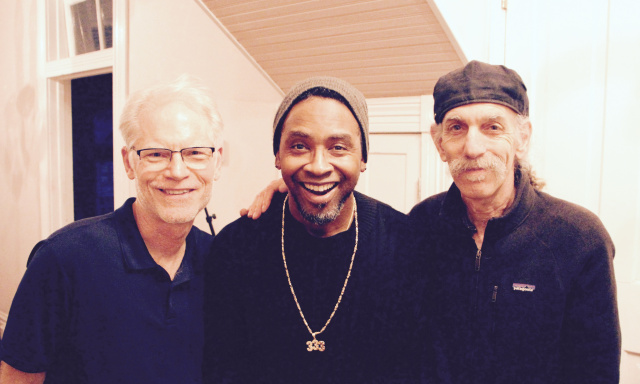
Sir Rod & The Blues Doctors: (left to right) Adam Gussow, Rod Patterson & Alan Gross
Together, Gussow and Patterson devised a plan for Patterson to travel to Oxford, Mississippi in February 2020 and record a demo album of Satan & Adam tunes with Gussow’s current band, The Blues Doctors.
Knowing it’s not always easy for a new artist to jump in with band musicians, Gussow wasn’t sure the sessions would be a success. But Patterson fit right in – in more ways than one. On a personal level, Gussow and Patterson shared similar recollections of Magee’s habits and philosophy on the blues.
“As we started talking, we realized we often had the same story,” recalls Gussow.
Musically, too, things quickly fell into place. On his first day in the studio, Patterson recorded six to eight songs with The Blues Doctors.
“It was uncanny – familiar and strange at the same time,” says Gussow. “We knew an act had been born.”
A rallying call for hope and humanity
While the plan was to stick to material from the Satan & Adam songbook, at the eleventh hour, a new song was born that both Patterson and Gussow immediately saw held special power.
In 2017, in a band “woodshed session,” The Blues Doctors recorded an instrumental track called “Yes We Do.” A euphoric blues rock song that strayed into jam band territory, Gussow realized the music was striking a chord with The Blues Doctor’s YouTube following.
At 4 PM the day before he was scheduled to drive to Mississippi for the final recording session, Patterson opened his email to find a message from Gussow inviting him to check out the tune and possibly write some lyrics. With so little time left in the studio, Patterson’s first reaction was to hope he wouldn’t like the music.
That was not to be.
“The second I clicked on it, I fell in love,” Patterson recalls. “It spoke to my soul.”
Inspired by the hippie vibe of Janis Joplin’s “Piece of My Heart,” he poured out a set of lyrics with a rousing call to overcome difference, see the humanity in others and unite to make positive change.
“I love people, and I hate division,” says Patterson, of the song. “We need to come together. We have bigger fish to fry than this black & white thing.”
Written in mid-February, Patterson’s lyrics were penned at a time when COVID-19 was not yet an American crisis and the killing of George Floyd, on the heels of other incidents of racial violence, had not yet sparked nationwide demonstrations and friction. Just a few weeks later, the music would seem even more prescient.
“It’s prophetic,” says Gussow. “It speaks to where we are today, with this pandemic and also the virus of racism.”
Knowing Bond to be a fellow musician, and appreciating the work Common Ground Committee is doing to overcome division and move toward progress, it was a natural inspiration for Gussow to reach out with an offer to share the song and its message of hope.
“We so much need organizations like Common Ground Committee that speak to the liberal center,” says Gussow. “We need to do something to heal the polarization in this country. Like the song says, ‘You wear red, I wear blue. We’ve got to heal our vision.’”
For his part, Bond recognizes in Gussow the essence of what it means to be a Common Grounder.
“He is constantly checking the way he thinks about things, and seeking to understand rather than demonize,” says Bond.
In the words of “Come Together,” Bond hears a message that is spot on. It was a natural fit to put together a video that marries the song’s stirring music and lyrics with imagery of Common Ground Committee guests – including some of today’s luminaries in the world of politics, foreign policy and more – finding agreement on some of today’s most divisive issues.
“Coming together is what we need to do in this country, and the lyrics are exactly what we preach,” Bond says.” Open your eyes, and open your heart. It takes real humility, a willingness to be vulnerable and to listen to what others have to say.”
At a time when people are missing the connection of live performances and surrounded by division among neighbors, Bond hopes the song will leave listeners with a renewed sense of joy and possibility.
“The world is in need of hope, and there’s reason to have hope,” says Bond. “At our forums, we are seeing people put aside their differences and work together. So we hope the spirit of this song and video will remind people what’s possible. You know, when you see Condi Rice and John Kerry laughing together and agreeing on things, it makes you stop and think.”
For Gussow and Patterson, amongst the joy of renewing the magic of Satan & Adam and creating new art that speaks to what the nation needs, there is a bittersweet note.
Magee, now 84 years old, hasn’t yet heard “Come Together.” Last week, he was admitted to intensive care with a diagnosis of coronavirus. While he can’t receive visitors, they are hoping a kind nurse and the power of technology will let him hear the album and how his nephew is carrying on his legacy.
And with the power of music…who knows?
UPDATE: Since this story was written, Sterling Magee has recovered from coronavirus and has been discharged from the hospital. As Gussow says…you can’t kill Mr. Satan.


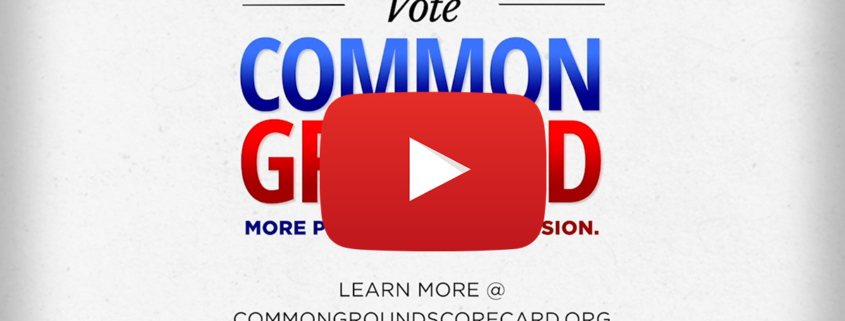
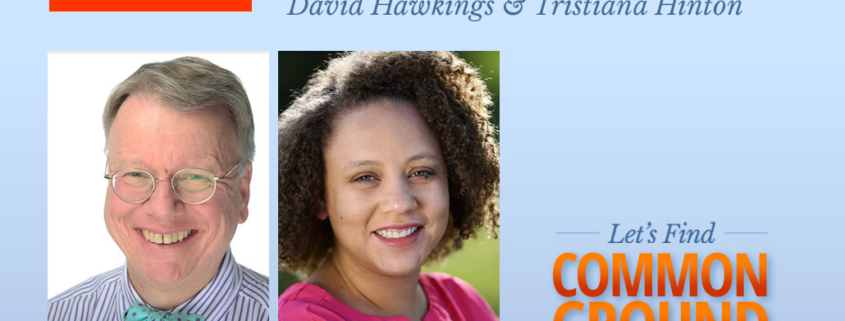





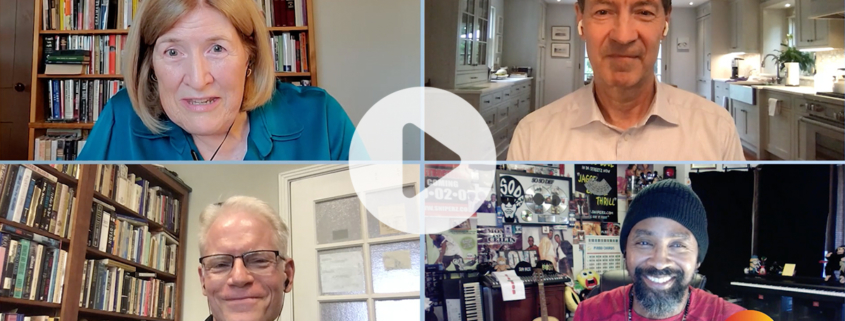



![Satan and Adam [Corey Pearson]](https://commongroundcommittee.org/wp-content/uploads/2020/07/Satan-and-AdamCorey-Pearson-640x321.jpg)

